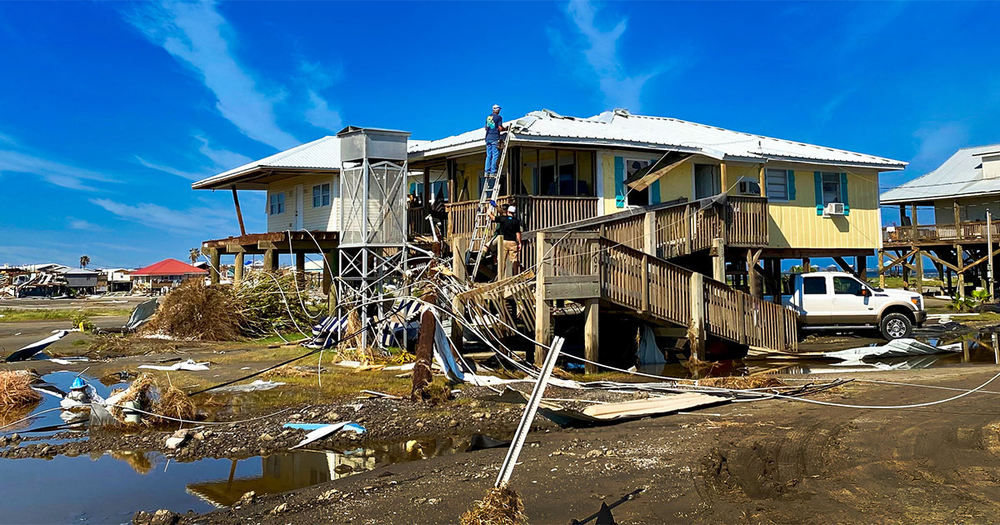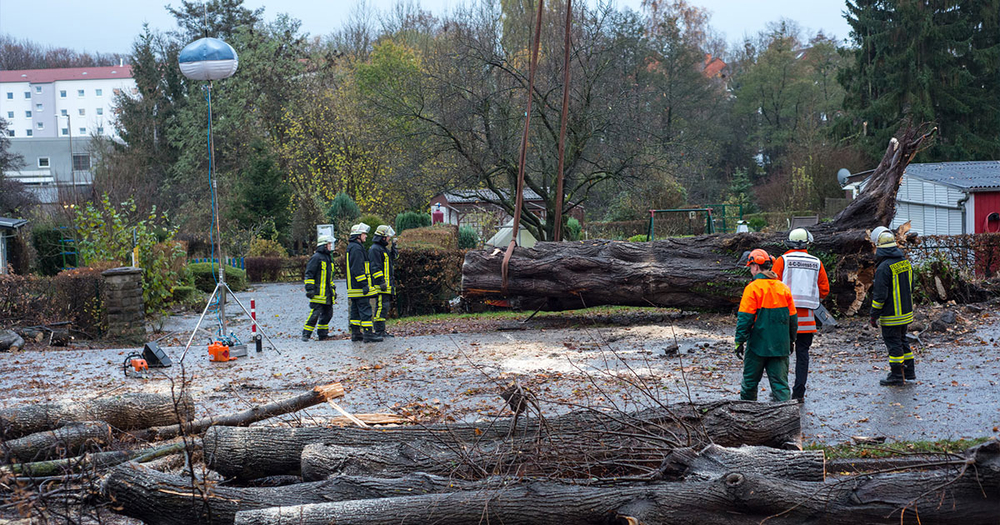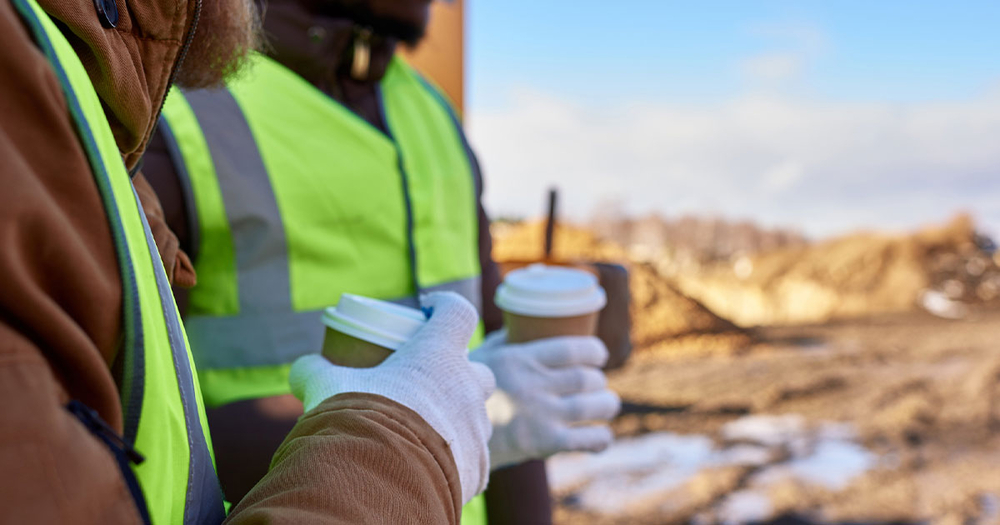
Cleaning up damage after a natural disaster like major flooding or storms like Hurricane Ian may be straightforward in theory, but there are a plethora of potential hazards that workers have to be wary of. The damage caused by natural disasters is likely to create multiple safety concerns for construction workers.
While these clean-up projects involve an increased risk of injury or toxic exposure, there are a few practices that can be implemented to reduce the level of danger to construction workers.
There are a wide variety of safety risks that come with working in an environment struck by natural disasters. Issues ranging from flooding, downed power lines, wildlife seeking shelter, and others can make the work more difficult and dangerous for the workers involved.

One of the greatest safety concerns for cleanup workers is floodwaters. As the rising water mixes with sewage lines, dangerous bacteria from the untreated sewage and other industrial chemicals that the floodwater may have come into contact with can be exposed to cleanup workers.
Some of the dangerous organisms that can be common during flood cleanup activities are E. coli, hepatitis A, typhoid, tetanus, and salmonella amongst others. As such, one of the most important precautions the workers involved should make sure their tetanus shots are up to date.
The majority of infections caused by floodwaters are a result of consuming contaminated water or eating foods that have come into contact with it. With that said, any breaks or small cuts in the skin can put individuals at greater risk from simple contact. Outside of these bacteria, however, other toxic chemicals that may be present could present a greater risk upon direct exposure.
If the cleanup site still has a high level of standing water, it is especially important to watch out for hidden debris and sharp objects that can be below the surface. Wearing proper safety equipment is crucial.
Another significant risk when performing storm cleanup is the threat of electrocution. Downed power lines can conduct electricity through floodwaters, puddles, and even common household materials like wood and cloth. Appropriate personal protective equipment and caution are crucial to avoid electrical hazards like severe shocks, burns, or even death in the recently flooded environment.
In cases with downed power lines, the best practice is to assume that all lines are live (actively dispersing electricity). When moving individuals, cleanup tools, or other equipment such as ladders, being cautious to avoid any contact with the power lines above is recommended. It is also suggested that the workers involved mark and cordon off the live power lines to avoid any accidental contact.
If a downed power line is beneath the water or there are other signs of a live electrical system (sparks, power fluctuations, etc.), shut off power immediately if possible. If portable generators are required to complete the cleanup work, they must be set up in a safe manner, isolated from the potentially live fallen power lines. If not properly used, the portable generators could even energize any inactive power lines in contact.
Cleaning crews should not attempt to restart the power without the help of a professional electrician.
Mold and fungi tend to thrive in flooded environments where moisture and humidity can aid in their growth and spread. While many kinds of mold can be harmless, cleanup crews have to be particularly cautious when working in environments rich in these fungi, as there is an increased risk of airborne exposure to fungal spores.
Waterlogged materials such as drywall, carpet fibers, wood, and others make ideal breeding grounds for fungi to spread, and if not properly prepared, can create a massive risk of mold exposure. Throwing away totally soiled materials that cannot be dried out or otherwise restored can help reduce the risk of exposure to infected items.
Workers should wear proper protective clothing and masks. Any sign of mold exposure should result in that cleanup worker stopping work until fungal infection can be ruled out.
If the cleanup site is not actively flooded, all windows, doors, and vents should be opened to allow for the site to dry as much as possible. While a flood-damaged building is not likely to dry quickly, allowing more moisture to escape the space will help to slow mold growth.
While fires are not one of the risks the average person thinks about after major storms, disaster flooding can cause damage to gas lines and result in leaks or even explosions. Ensuring that there is no gas leak in the work area is crucial, both to avoid starting a fire as well as avoiding gas or carbon monoxide poisoning.
As a result, crews should initially check to see if they smell gas before entering a building. Improper use of portable generators can also lead to fire, and it is important for cleaning crews to follow proper occupational safety procedures.
While possibly less dramatic than bacterial exposure and electrocution, hazards caused by mass structural damage are a major risk to the workers involved. Structural damage can include risks mentioned previously such as gas leaks, but also covers more straightforward damage to flooded buildings.
Workers should be properly equipped with safety equipment and should be especially cautious of things like holes in the floor and other fall risks. Crews should avoid working near or under roofs or overhangs that do not have proper support in place. As water damage and direct collision with debris impact walls and other load-bearing supports, disaster workers must be observant to avoid getting caught in a structural collapse.
Debris can also pose a risk, as fallen trees and branches along with other materials like broken glass and jagged stone can cause significant harm to workers.
Another risk that can be faced by cleanup crews is the possibility of facing sheltering insects and animals. The moisture of flooding homes can make an ideal habitat for mosquitoes, which in addition to being an irritant can spread diseases like Zika.
During a large storm, local animals such as pets, rats, alligators, snakes, etc. can also seek shelter in small dry spaces within standing structures. Workers must be cautious to avoid startling any animals and getting attacked.
While there are more specific best practices to keep in mind when dealing with particular hazards, there are some more general guidelines that can reduce the overall risk faced when working in disaster zones.
The best way for an individual working with a cleanup crew to protect themself is by using protective clothing and gear. Protective equipment can decrease the risk of serious harm from debris and sharp objects as well as the risk of infection or exposure to fungi and toxins. Based on the particulars of the cleanup site, recommended gear can include:
· Gloves
· A hard hat
· An N-95 NIOSH-approved respirator
· Watertight boots
· Safety glasses or goggles
· Long-sleeved clothing, covering as much skin as possible
· Waterproof clothing when possible
Ensuring that individual crewmembers do not work too independently of one another can help maintain worker safety. Crewmembers should employ the buddy system for tasks like moving heavy objects, setting up ladders, and when entering unknown spaces. If crewmembers watch out for one another and stay nearby to assist when needed, individuals will be able to get out of risky situations more easily when needed.
Especially when working in disaster areas, cleanup workers must remain constantly aware of their surroundings. Situations can change rapidly whether from flooding to structural collapses, and individuals need to be ready to move at a moment’s notice.
When coming across toxic substances or containers of chemicals that may be floating or otherwise discarded in a cleanup area, ensure that proper precautions are taken to avoid exposure. For procedures on dealing with these contaminants, contact the Environmental Protection Agency.
Staying as clean and dry as possible is crucial to keep crewmembers healthy. Cleanup sites that are, by way of flood or other causes, contaminated by bacteria or toxic chemicals can pose a significant threat to individuals in the operation. Regularly washing the hands and face with soap and clean water and changing socks regularly can help decrease the risk of consuming harmful fungi or bacteria.

Working in disaster zones can at times be overwhelming for cleanup crew workers. Dealing with the stresses of an active or recent natural disaster, widespread damage, and being on-site potentially far from home for extended periods can be too much if the stress is not properly managed.
Taking breaks and resting when possible, ideally outside of the cleanup site, can help workers to unwind periodically. Eating healthy food and getting enough sleep can keep energy and mood up, which can be critical in such situations.
Proper preparation for the tasks at hand can also help keep workers from feeling overwhelmed by the scope of the work ahead. Click here to see personal protective equipment and more, available at Baseline Equipment.